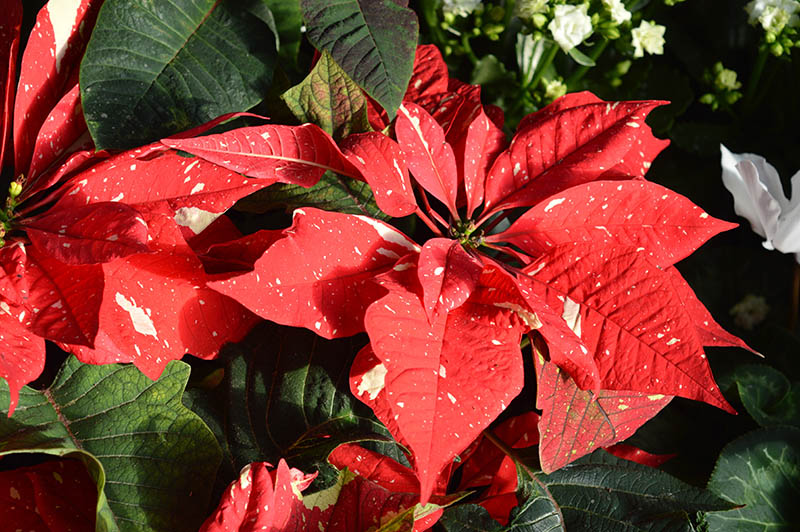How to Pet a Parakeet: 5 Vet-Reviewed Places It’s Safe to Touch Your Bird
By Kit Copson
Updated on

Click to Skip Ahead
Parakeets are a group of small parrots with long tail feathers and a slender build. Budgerigars (Melopsittacus undulatus), a type of parakeet, are one of the most popular companion birds thanks to their small size, color diversity, and sociability. That said, handling can be a delicate affair. Parakeets can be timid—especially at first—and sometimes get nippy, so you need to make sure you approach them in the right manner and get them used to being touched gradually.
In this post, we’ll explore where parakeets like to be petted the most and how to approach petting. We’ll also give you a heads-up on where to never pet your parakeet.
Note: Birds generally take better to being petted against the feathers rather than in the direction of the tail. When you touch your parakeet’s feathers, do so in the direction of the beak.
The 5 Places It’s Safe To Touch & Pet A Parakeet
1. Beak
Though it may seem unusual, the beak is typically the ideal first point of physical contact for a parakeet. Slowly move your fingers toward the beak and pet it gently to let your parakeet get accustomed to the feeling. Avoid making any sudden movements that may startle your bird, and don’t force things if they back away or nip you.
This may happen at first when your parakeet doesn’t know you well.

2. Sides of the Face
If your parakeet accepts beak petting, you can move on to stroking the sides of the face, behind the beak, and around the ears. Just take care not to poke the eyes.
3. Back of the Head
Once petting the sides of the face is going well, start lightly rubbing the back of the head. When parakeets get comfortable with their humans, many greatly enjoy being petted on the face and head.
4. Chin
In addition to the face and head, some parakeets appreciate a nice rub under the beak but proceed with caution in this area—don’t go below the neck. It’s unwise to pet a parakeet beneath the neck because they may associate this with sexual behavior (we’ll share more information on this further down).

5. Feet
Petting your parakeet’s feet from when they’re young is a good way to get them to feel more comfortable having their nails clipped when necessary. Not every parakeet will take kindly to this, though, so respect their boundaries if they don’t accept foot petting.
Where Should I Never Pet My Parakeet?
In brief, it’s best to stick to only petting your parakeet on their beak, head, face, and feet. Avoid petting below the neck or down the back, as this can cause the bird to think you’re performing a mating ritual, especially during their hormonal season.
This leads to frustration, and the bird may go on to display unsavory behaviors—like jealousy, possessiveness, and aggression—because they’ve mistaken you for their mate. Unfortunately, these behaviors aren’t just fleeting, they tend to stick, which is why it’s essential not to encourage them.
Do All Parakeets Enjoy Petting?
If you start gradually and gently touching your parakeet when they’re young, they’re much more likely to develop into an adult that enjoys a good fuss. This doesn’t mean, however, that every parakeet will grow to enjoy petting. Some, despite their human parent’s best efforts, never really take to it, and prefer to love from a distance.
Whatever your bird’s preference, it’s important to respect their boundaries. Forcing them to be touched when they don’t like it will just make them feel stressed around you. Let your parakeet do their thing, whether that’s playing with you, perching on your shoulder while you read the paper, or simply hanging out near you.

Extra Parakeet Petting Tips
It’s not just important to pet your parakeet in the right places; how you approach interactions is also key to building a solid bond. Here are some extra tips for making petting a success:
Go Easy
Don’t overwhelm your parakeet by handling them excessively when you first bring them home. Let your bird get used to your voice and presence before you start touching them. Be patient with your parakeet, and remember that they’re adjusting to a new environment and will need some time to settle in and feel safe around you. Go at their pace.
Set a Routine
What’s more, too much petting at first can teach the bird to expect it on a very regular basis, and you can’t be with them all the time, so set realistic expectations and stick to them. For example, if you only plan to spend around an hour per day petting or playing with your parakeet, start with this amount of time and be consistent.

Always Supervise
If there are children at home, make sure they know how to gently touch and handle the parakeet, and be there to supervise at all times. Parakeets are fragile and could easily be injured by overenthusiastic children. In addition, a parakeet may bite if they feel threatened.
Remove Jewelry
Parakeets are fond of shiny objects, so they may be intrigued by any jewelry you’re wearing and try to grab at it. Necklaces and earrings—which can be ripped out—are especially hazardous, so it’s wise to remove these before petting your bird.
Conclusion
Parakeets can make wonderful, sociable companions, but this doesn’t necessarily mean your parakeet will show friendship by letting you pet them. Each bird is a unique character, so if your parakeet loves to be petted, feel free to indulge them!
On the other hand, if they just don’t seem to get comfortable with petting, don’t worry. If your parakeet seems otherwise relaxed around you, wags their tail, perches on you, plays with you, or simply spends a lot of time near you, these are sure signs that they’re comfortable with you.
Also see:
Featured Image Credit: Kyttan, Shutterstock












